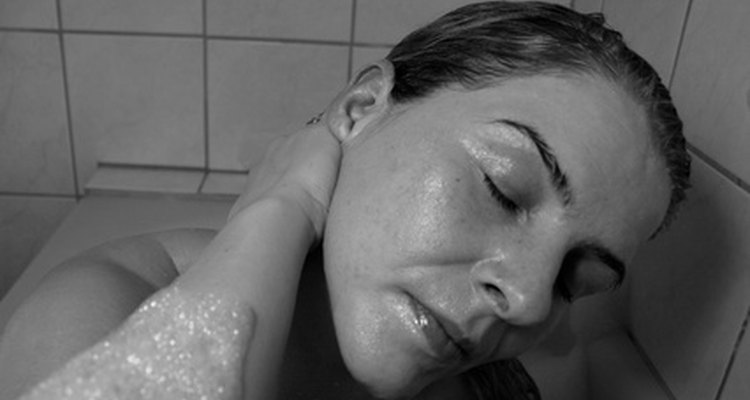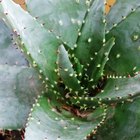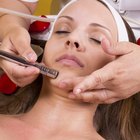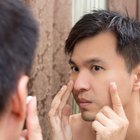
Selsun Blue is a medicated shampoo that contains the active ingredient selenium sulfide. This bright blue strong-smelling shampoo is used to treat several skin disorders. It is intended for topical use only and should be shaken to thoroughly mix the chemicals prior to application.
Seborrheic Dermatitis
Selsun Blue is commonly used to treat an infection of the scalp known as seborrheic dermatitis. This condition causes scaling and itchy red skin on the scalp and can sometimes spread to the upper back, upper chest, face, or other oily areas, according to the Mayo Clinic website.
This harmless but uncomfortable and unsightly condition is caused by yeast growing on oily areas of the skin and combining with bacteria. Stress and fatigue can also promote the condition, which is typically more common in the winter. Those with AIDS or Parkinson disease have a higher risk of developing seborrheic dermatitis.
Medicated shampoos that contain selenium sulfide, such as Selsun Blue, are the first recommended treatment for seborrheic dermatitis. Other shampoos that contain tar, ketoconazole, or pyrithione zinc are also effective. Unfortunately, this shampoo may not eliminate the condition, depending on the condition's severity and the patient's skin type.
Dandruff
Dandruff is the most common reason people buy Selsun Blue. Selenium sulfide is a common treatment for dandruff, which may merely be a side effect of seborrheic dermatitis.
Dandruff is the white, flaky skin shed by the scalp. It's often visible on dark clothing and can be embarrassing. Applying Selsun Blue about twice a week may control this common symptom of another problem.
Dandruff is often caused by dry skin or a lack of shampooing, which allows oil to build up on the scalp and cause flaking. It can also be a side effect of eczema, sensitivity to hair care products, or a yeast infection of the scalp.
Tinea Versicolor
Tinea versicolor is a fungal infection of the skin that occurs most often in teenagers and young adults. The fungus disrupts the normal activity of the pigment in the skin, causing patchy discoloring in the skin.
Oily skin, excessive sweating, hormonal changes, and humid climate encourage tinea versicolor. Selsun Blue may be appropriate for mild cases. To treat tinea versicolor, rub the shampoo into a lather over the affected skin and leave it on for 10 minutes before rinsing.
More severe cases may not respond to Selsun Blue and may require more potent topical or oral medication.
Related Articles

What Is Tiger Balm for Sinus?

What Are the Benefits of Ashwagandha in ...

List of Retinoids

Alternative Treatments to Nizoral ...

Black Pepper Oil for Vitiligo

How to Remove Dandruff With Baking ...

Aloe Vera & Seborrheic Dermatitis

Uses for Castor Oil on the Skin

How to Get Lighter Skin Without ...

How to Use Pyrithione Zinc for Rosacea

The Best Vitamins for Sinuses

Bitter Melon for Acne

Fraxel Laser Treatment Dangers

How to Reduce Redness

How to Reduce Acne Inflammation

Can Age Spots Be Reversed?

Ingredients of Accutane

Blue Light Therapy for Cystic Acne

Is an Orange Healthy to Eat for Your ...

Can Drinking Nettle Tea Reduce DHT ...
References
Writer Bio
Lee Morgan is a fiction writer and journalist. His writing has appeared for more than 15 years in many news publications including the "Tennesseean," the "Tampa Tribune," "West Hawaii Today," the "Honolulu Star Bulletin" and the "Dickson Herald," where he was sports editor. He holds a Bachelor of Science in mass communications from Middle Tennessee State University.
Photo Credits
the bathing woman image by sumos from Fotolia.com